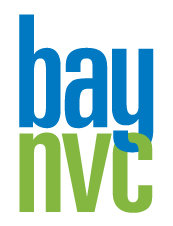by Miki Kashtan
It is in the nature of my work that people bring to me those situations that challenge them beyond what they are able to handle with their own skills. More often than not, I have the joy of supporting them in finding a way to go back to the situation and respond in a new way, with more love or understanding for another, with more willingness to express some previously hidden truth, or with more capacity to attend to everyone’s needs. From time to time, a situation that someone presents to me is such that I, too, don’t see a way that it can be handled externally. Sometimes, the only place where we can effect any transformation is internally, in how we frame a situation to ourselves. Since we are, as I often see it, meaning-making creatures, what we tell ourselves about a situation can radically alter our experience.
One frame I find to have extraordinary potential for such inner transformation is the tragic lens. It’s a soft and loving approach which dissolves the stiff walls we hold up in protection from life, that softly embraces everyone and extends tenderness to insurmountable obstacles we encounter along the way to living a conscious and human life.
Understanding the Tragic Lens
Recently, during a call that’s part of my teleclass series based on this blog, I had one such opportunity to engage with a man, let’s call him Ben, who was facing a situation with so much challenge for so many people, that the tragic lens was my best offer to him. I suggested that embracing a situation as tragic rather than wrong allows us to mourn it, and in that way liberates us. It took some effort. Initially, Ben, like so many of us, couldn’t separate “tragic” from “wrong,” and remained outraged and helpless. He couldn’t see his way to having empathy for the person in his situation whose actions most affected the whole group. Gradually, he discovered that he didn’t have to first receive empathy for himself so he could let go of his reactivity. Instead, he saw the possibility that the tragic lens, which holds compassion for our human fallibility, all of us at once, could support him in finding tenderness for everyone in the group. The man in question would surely be horrified at the effect he was having on others if he had the capacity to open himself up to the feedback others were attempting to give him before they lost their cool and reacted to him, one after the other. He couldn’t, because the amount of mourning he would need to encounter would knock him out. The people who had been trying to give this man feedback and disappeared into rage and threats instead would surely vastly prefer to find a way to stay connected with him so they could be effective in transforming his behavior which had been so destructive for the group. And Ben himself, as someone committed to Nonviolent Communication with all its attendant intention to make things work for everyone, would surely prefer to have found an empathic way to respond to all, including himself.



